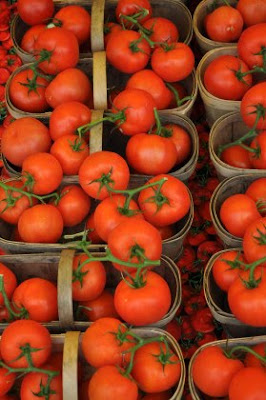When I was just a little girl, I would often help with planting and caring for our large backyard garden. One summer I remember asking my dad if I could please help with planting. He obliged and said that I could help with planting seeds for bean plants. He prepared the rows for me, and then instructed me on how the seeds should be planted. He explained that each seed had a little black dot in the middle of one side and this dot had to be facing up when the seed was planted, otherwise, the bean plant would grow upside down into the ground. Now, I was a kid with a big imagination and the thought of those poor bean plants growing upside down bothered me terribly. I was too young and naïve to grasp that he was just playing a little joke on me. I remember him watching me, smiling, as I very carefully planted the rows, making sure that every seed was planted with the black dot facing up. When the bean plants grew successfully that summer I remember how happy I was that I had done so well.
Now I have a small, two tiered garden at the side of my house, where I grow rhubarb, chives, flat leaf Italian parsley, tarragon, basil, thyme, tomatoes and a lovely assortment of daisies and lilies. I don’t plant beans because of an overabundance of neighbourhood rabbits, which seem to enjoy eating fresh beans right out of the garden as much as I do. Fortunately at this time of year, lovely, freshly picked green beans are now readily available at my local farmers’ market.
I’m always surprised whenever someone insists on snipping off the tiny, curly ends of green beans, presumably finding them offensive for some unexplainable reason. It seems that the French insist on snipping off those little ends, too. In his humourous, thoroughly enjoyable book entitled; “The Sweet Life in Paris”, pastry chef extraordinaire, David Lebovitz, writes that the French sometimes say things unexplainably illogical, for example; “…that snipping off the ends of green beans is a simple way to remove radioactive matter – that there’s just no comeback possible.” Personally, I like those curly little ends and leave them attached when slicing my green beans.
The following is a quick, delicious alternative to simply steaming your greens and serving with a dollop of butter. I really like the taste combination of green beans and peas together. This side dish will serve 4 – 6.
Green Bean and Peas with Sliced Almonds – by Catherine Negus
Ingredients
2 slices of bacon
12 oz. fresh green beans
1 ½ cups fresh peas
1 tbsp. extra virgin olive oil
2 tsp. balsamic vinegar
sea salt
freshly ground black pepper
¼ cup sliced almonds
Method
In a frying pan, cook the bacon, and then remove the slices to a plate lined with a paper towel to drain. When the slices are cool, cut or break them into small pieces. Shell the peas. (Sorry, no mushy canned peas allowed.) Remove the vine end of the beans and french slice them into pieces about 1 ½” long. (Leave on the curly little ends if desired.) Blanche the green beans and peas together by cooking them in a generous pot of salted, boiling water for 2 minutes. Remove them from the boiling water with a slotted spoon and plunge them immediately into a bowl of ice water. This process of blanching retains the bright colour and crispness of the vegetables. When the beans and peas have cooled, remove them from the ice water. In a large skillet, heat the extra virgin olive oil on medium high heat. When the oil is hot, add the beans, peas and bacon and toss with the olive oil, just until reheated. Add the balsamic vinegar and toss again. Season with salt and pepper to taste. Add the sliced almonds over top and serve immediately.













